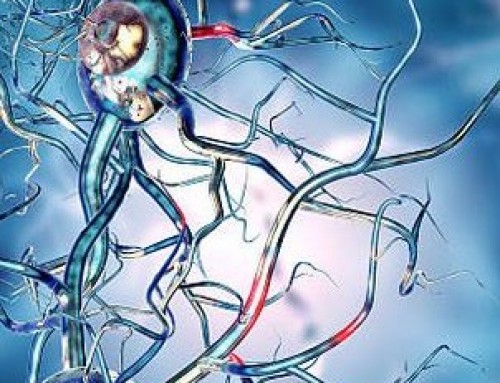Stem Cell Researchers Say Cure for Type 1 Diabetes May be Possible
 People diagnosed with diabetes have long battled with the disease. In fact, nearly 30 million Americans have some form of the disease according to the American Diabetes Association.
People diagnosed with diabetes have long battled with the disease. In fact, nearly 30 million Americans have some form of the disease according to the American Diabetes Association.
What is Diabetes
There are a few things we need to understand in order to explain what this condition is. First, our bodies produce glucose from the foods we consume. Likewise, our pancreas produces the hormone insulin. Scientists frequently refer to insulin as a “key” that allows the glucose to enter into our cells.
When a person has diabetes, their body either doesn’t make enough insulin or can’t use its own insulin as well as it should.
When the body produces an insufficient amount of insulin or it stops responding to the insulin in the system, the glucose levels start to build up in the blood leading to high blood sugar or hyperglycemia.
Prolonged exposure to excess glucose in the system can expose diabetics to a number of serious health conditions if not properly managed. This is what makes treatment so important. Treatments vary based on the severity or type of diabetes a person has.
Types of Diabetes
Not everyone diagnosed with diabetes carries the same level of risk nor do they require the same level of treatment. Diabetes falls into one of several categories.
Gestational Diabetes
This condition is specific to pregnant women and typically goes away once the baby has been delivered.
Prediabetes
This is a condition where the blood glucose levels are elevated; but not significantly enough to merit diagnosis. Anyone with this diagnosis will have an elevated risk of heart disease and stroke. They run a higher risk of their condition progressing into Type 2 diabetes (see below).
Type 2 Diabetes
Between 90 – 95% of all people receiving the diagnosis have this form. The good news for these patients is that their condition can typically be managed through healthy lifestyle changes such as diet or exercise. Less than half of these people require medications.
In 2012, 86 million Americans age 20 and older had prediabetes; this is up from 79 million in 2010.
Type 1 Diabetes
 People with this diagnosis are likely dependent on insulin in order to maintain their blood glucose levels. Daily injections are a frequent expectation for these people. While variations of insulin injections have been developed over the decades, there has still been little advancement towards an actual cure.
People with this diagnosis are likely dependent on insulin in order to maintain their blood glucose levels. Daily injections are a frequent expectation for these people. While variations of insulin injections have been developed over the decades, there has still been little advancement towards an actual cure.
Type 1 is specifically caused by damage to the insulin-manufacturing “beta” cells deep within the pancreas. Specifically, those beta cells are attacked by the immune system. It is for this reason the condition is consider an autoimmune disease.
There are a number of contributing factors that may influence the emergence of Type 1 such as genetics. Some researchers also believe environmental factors play a role.
An estimated 1,250,000 people have Type 1 diabetes. This means, regardless of cause, there is an urgency to find a treatment option more sustainable than injections. While a sustainable solution has evaded doctors for the better part of a century, the field of regenerative medicine (with help of stem cells) may be closer than ever to a solution.
The Case for Stem Cells in the Treatment of Type 1 Diabetes
Believe it or not, researchers working in the field of regenerative medicine have made significant strides in recent years towards a cure for diabetes.
Steps Towards a Cure
Harvard University provided the first real promise of a cure when they identified a means to invoke stem cells to form a large volume of insulin-producing beta cells in mice with Type 1.
This approach demonstrated that the cells would bring glucose levels back under control until the immune system of the host eventually attacked and killed the cells. It was understandable to see the autoimmune response; however, it provided valuable insight into the viability of stem cells.
MIT took the research stared by Harvard and built upon it. They had their focus on devising a way to keep the beta cells from being attacked in an autoimmune response. The MIT researchers used an alginate gel (derived from algae) to coat the stem cell-produced beta cells. The team tested 800 variations of alginate in an attempt to find the right masking agent.
MIT identified a version of the alginate that in fact worked. Their results demonstrated a remission of symptoms for an average over 6-months. It’s uncertain how that duration translates to humans. The next step is to move forward with human trials.
Harvard University has since entered into a joint research partnership with the Washington University School of Medicine in St. Louis. They anticipate that their beta cell research will move to human trials in the next 3-5 years based on recent progress.
“In theory, if we could replace the damaged cells in these individuals with new pancreatic beta cells — whose primary function is to store and release insulin to control blood glucose — patients with type 1 diabetes wouldn’t need insulin shots anymore,” – First author Jeffrey R. Millman, PhD; Assistant Professor of medicine and of biomedical engineering at Washington University School of Medicine.
This approach, if effective, would render insulin shots obsolete. The Harvard and MIT studies certainly don’t provide a guaranteed solution is coming; but it does provide hope for a cure.
Other Treatment Approaches – Betatrophin Therapy
Douglas Melton of another Harvard University stem cell research team has taken an approach similar to his colleagues. Melton’s team identified through their initial research that a hormone produced in the liver can be triggered to produce insulin-manufacturing cells.
The research led by this team was unfortunately withdrawn in December 2016 after producing poor results in follow-up trials.
At this point, several teams are tackling the problem – we’ll have to wait to see which solutions work and which ones do not.
References:
Millman JR, Xie C, van Dervort A, Gürtler M, Pagliuca FW, Melton DA. Generation of stem cell-derived ß cells from patients with type 1 diabetes. Nature Communications. May 10, 2016. DOI: 10.1038/ncomms11463 www.nature.com/naturecommunications
Felicia W. Pagliuca, Jeffrey R. Millman, Mads Gürtler, Michael Segel, Alana Van Dervort, Jennifer Hyoje Ryu , Quinn P. Peterson, Dale Greiner, Douglas A. Melton. Generation of Functional Human Pancreatic β Cells In Vitro. October 9, 2014. DOI: 10.1016/j.cell.2014.09.040





